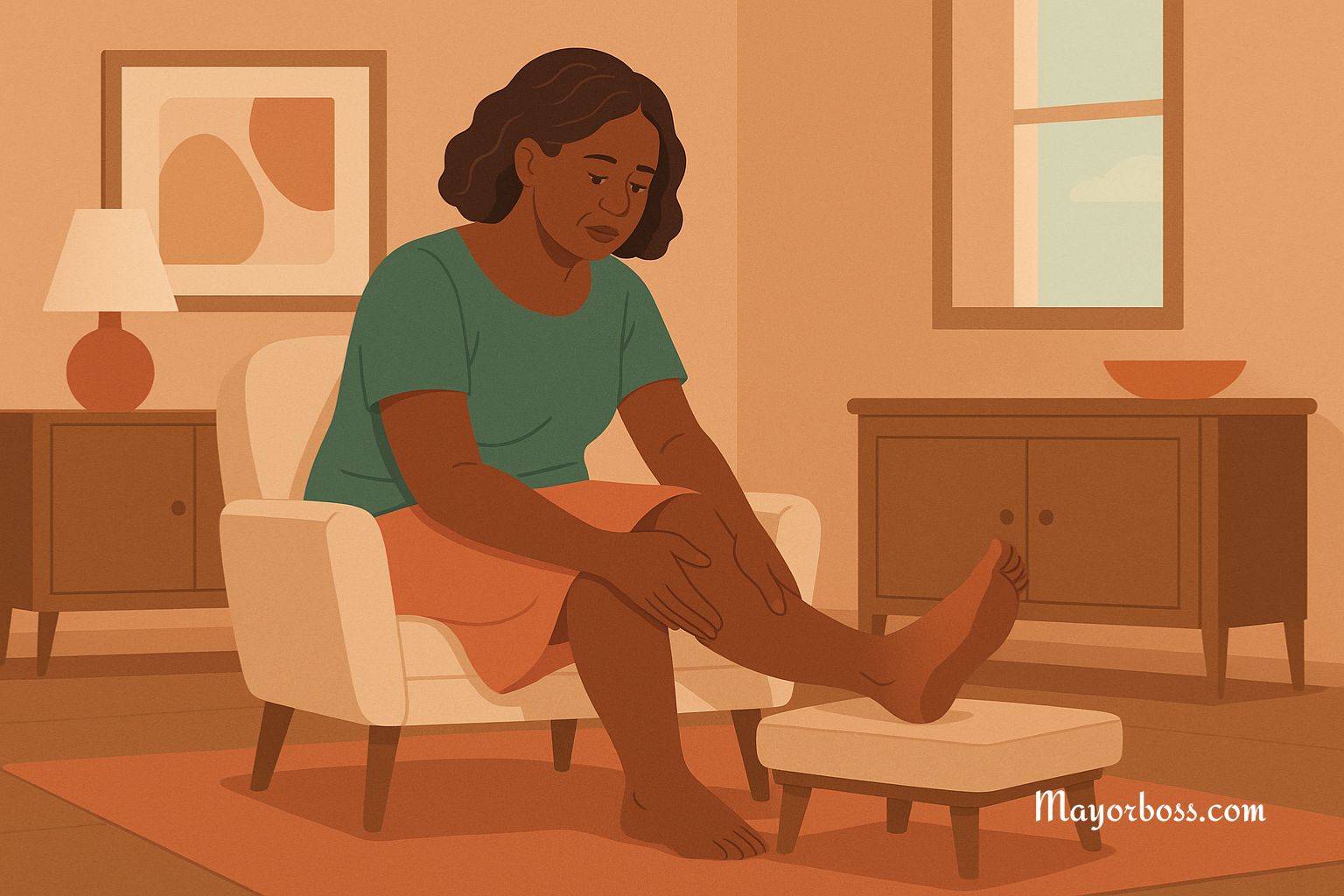Why Your Ankle Swelling Won’t Go Down—and How to Fix It
Your ankles or feet are swollen—whether painful or not—and you are left wondering why this is happening and what you can do about it.
You are not alone. Every month, thousands of people face this same problem. For some, the swelling appears without a clear reason. For others, it follows surgery, a fall, a shock, or problems with blood circulation.
Naturally, this leads to many questions—and sometimes even worry. What is causing the swelling? Is it something serious? How can you treat it and find relief?
In this article, we will walk through the possible causes, when to seek medical help, and the best ways to reduce ankle swelling safely and effectively. Let’s get started.

What Causes Persistent Ankle Swelling?
Several health issues can lead to swelling that stays around longer than normal. Here are the main reasons:
1. Injury
One of the most common causes is injury. Sprains, fractures, or torn ligaments can cause lasting swelling. Even a mild sprain can make the ankle stay swollen for weeks if not properly treated.
If you recently twisted, fell, or hit your ankle, an injury is likely the cause.
2. Chronic Venous Insufficiency
Your veins carry blood back to your heart. If the valves in your veins do not work well, blood can pool in your lower legs. This is called chronic venous insufficiency. It often causes swelling, especially at the end of the day.
You may also notice skin changes, such as dark patches or dryness, around your ankle.
3. Heart, Kidney, or Liver Problems
Swelling in both ankles, especially if it gets worse in the evening, could be a sign that your heart, kidneys, or liver is not working properly. These organs help manage fluids in the body. When they are not functioning correctly, fluid can build up in your legs and ankles.
If you also feel short of breath, very tired, or notice swelling elsewhere, it is important to seek medical attention.
4. Lymphedema
Your lymphatic system helps remove extra fluid from tissues. If it becomes damaged or blocked, fluid can build up and cause swelling. This condition is called lymphedema.
Lymphedema often causes a heavy, tight feeling in the ankle or leg, and the skin may feel thicker or harder than normal.
5. Infections
An infection in the skin, called cellulitis, can cause redness, warmth, pain, and swelling. Infections often happen if you have cuts, ulcers, or chronic swelling that weakens your skin’s defenses.
This type of swelling needs fast medical treatment to prevent it from spreading.
6. Medications
Certain medicines can cause your body to retain fluid, leading to ankle swelling. These include:
- Blood pressure medications (such as calcium channel blockers)
- Steroids
- Hormone therapies (like estrogen)
- Some diabetes medications
If your swelling started after beginning a new medicine, speak to your doctor.
7. Gout or Arthritis
Gout is a painful type of arthritis caused by uric acid crystals in the joint. It often targets the big toe but can affect the ankle too. Other forms of arthritis, such as osteoarthritis or rheumatoid arthritis, can also cause swelling in the ankle.
If you notice stiffness, pain, or swelling, joint problems could be to blame.
Signs You Should See a Doctor
Some swelling can be handled at home, but certain signs mean you need professional care. See a doctor if:
- Swelling is sudden, severe, or painful
- One leg is much more swollen than the other
- You have shortness of breath or chest pain
- The skin becomes very red, warm, or hard
- You have a fever
These signs could point to serious conditions like a blood clot, infection, or heart failure.
What You Can Do to Help Reduce Ankle Swelling
While the cause of swelling determines the best treatment, there are general steps you can take to help reduce it:
1. Rest and Elevate
Keep your ankle raised above heart level when you are sitting or lying down. This helps drain fluid away from your ankle. Try to elevate it for at least 20 minutes several times a day.
2. Apply Ice
If your swelling is from an injury, apply an ice pack for 15 to 20 minutes at a time, a few times a day. Ice helps reduce inflammation and discomfort.
Be sure to wrap the ice pack in a cloth. Do not place ice directly on your skin.
3. Use Compression
Compression socks or bandages can help push fluid out of your ankle and improve blood flow. Make sure they fit properly and are not too tight. Compression is especially helpful if your swelling is from poor circulation.
4. Move Your Ankle
Gentle movement helps blood flow and reduces stiffness. Try moving your foot up and down, making circles, or doing light ankle exercises several times a day.
Avoid standing or sitting still for long periods when possible.
5. Watch Your Salt Intake
Too much salt in your diet can make your body hold on to water. Reducing your salt intake can help lower swelling. Choose fresh foods and limit processed or fast foods, which often have hidden salt.
6. Stay Hydrated
It may sound odd, but drinking plenty of water can actually help your body flush out excess fluids. Aim to drink water throughout the day unless your doctor has advised fluid restrictions.
Medical Treatments for Persistent Swelling Ankle
If home treatments are not enough, or if you have an underlying health condition, medical treatment may be necessary.
Doctors may recommend:
- Prescription diuretics (water pills) to remove extra fluid
- Physical therapy to strengthen muscles and improve circulation
- Treatment for underlying conditions like heart failure, kidney disease, or vein problems
- Surgery in cases of severe vein or lymphatic issues
Prompt treatment often prevents swelling from getting worse or leading to complications.
Final Thoughts
Ankle swelling that refuses to go away is not something to ignore. While minor swelling from an injury can often heal with simple care, ongoing or severe swelling could signal a deeper health problem.
If you are unsure of the cause or if your symptoms worsen, it is important to seek medical advice.






